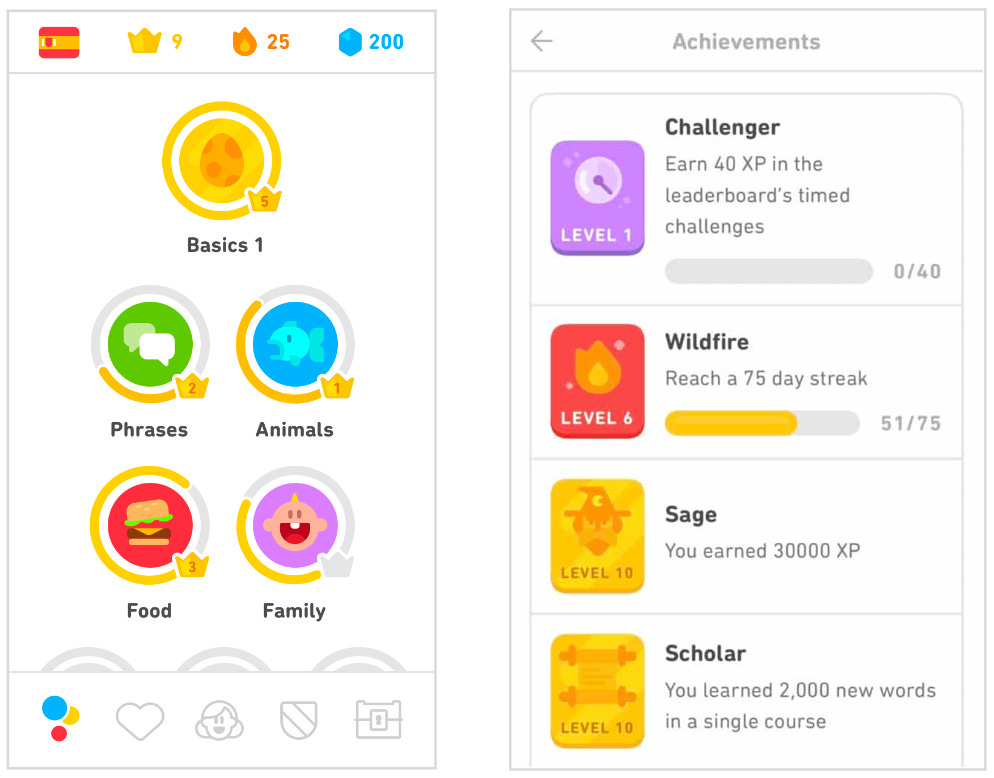Breaking Down Duolingo's Growth Model: How they Achieved 450% User Growth
Discover how Duolingo achieved a 450% growth acceleration through innovative strategies like leaderboards, streaks, and notifications. This is a unique case study about building a sticky product.
In this analysis, we'll take a closer look at how Duolingo, the language-learning app, managed to achieve a 450% growth in daily active users (DAU) over four years.
The company faced a challenge in mid-2018 when DAU growth was slowing down, which was a cause for concern for investors who were eager to see fast monetization growth.
The company encountered a "leaky bucket" problem, which led them to prioritize retention over new-user acquisition.
Phase 1: Using data and models
Initially, the team focused on improving retention, as new-user acquisition was already organic, and they lacked an obvious lever to supercharge it.
The team suspected that gamification could improve retention, given the success of several gamification mechanics already implemented by Duolingo, such as the progression system on the home screen, streaks, and achievements system.
They also noted that top digital games had higher retention rates than Duolingo, indicating that gamification could have more significant impacts.
Initially, Duolingo was only collecting data to support A/B testing without using it for generating insights. The thought about using this data to create a more sophisticated model to identify a North Star metric.
They used Zynga's weekly retention metrics to segment and model users based on engagement levels, then they modified the model into a daily view, and added several more metrics. The model is an almost closed-circuit system that conveniently adds up to DAU, where new users, current users, reactivated users, and resurrected users are the top four buckets.
The remaining three buckets represent users who are not active today and have different degrees of inactivity.
DAU, WAU, and MAU can easily be calculated from these buckets, making it easy to model them over time. Manipulating the rates represented by the arrows allows modeling the compounding and cumulative impact of moving these rates over time, which are the levers product teams can pull to grow DAU.
The team ran a simulation for each rate, where they moved a single rate 2% every quarter for three years, holding all the other rates constant. Based on this analysis, the author realized that CURR was the metric they had to move to get the strategic breakthrough they wanted. They decided to create a new team, the Retention Team, with CURR as its North Star metric. This helped them shift their mindset from focusing on new-user retention to current-user retention, which had a much greater impact on DAU.
Phase 2: Gamification
#1 Leaderboards
After discovering that the metric CURR had not moved in years, the team decided to focus on gamification to improve retention. Based on the success of leaderboards in FarmVille 2, the team decided to implement a similar system in Duolingo, but with adaptations to suit the context of language learning.
The leaderboards had an immediate positive impact on metrics, including a 17% increase in overall learning time and triple the number of highly engaged learners. The team continued to optimize the feature as a vector for improving metrics, and it was a breakthrough for the Retention Team.
#2 Push Notifications
The Retention Team was highly motivated to keep current users engaged and practicing every day, and they began exploring push notifications as a potential strategy. Although Duolingo had previously found notifications to be effective for growth, their impact had plateaued. However, with a newly energized team and fresh ideas, they decided to revisit this approach.
During their exploration, the team was guided by a cautionary tale from Groupon's CEO, who warned of the dangers of aggressively testing email and push notifications. Groupon had experienced a significant increase in metrics when they began sending more emails per day, but over time, this approach destroyed their channel, resulting in users opting out permanently. To avoid this outcome, Duolingo established a foundational rule: protect the channel. While the team had freedom to optimize other aspects of the notifications, they could not increase the quantity without strong justification and CEO approval.
Despite this constraint, the team was able to generate numerous small- and medium-sized wins through iterations, A/B testing, and a bandit algorithm. These successes translated into substantial gains in daily active users year after year.
#3 Streaks
The Retention Team's APM explored whether certain Duolingo features had a strong correlation with retention and found that users who achieved a 10-day streak were less likely to drop off. Although the insight was affected by correlation and selection bias, it sparked investment in improving the streak feature, which shows users their consecutive days of app activity.
Improving the streak feature had surprisingly numerous optimization opportunities, and the first significant win was the streak-saver notification. This notification alerted users with streaks when they were about to lose them and showed that doubling down on streak optimizations had considerable potential.
Further streak improvements followed, such as calendar views, animations, changes to streak freezes, and streak rewards, among others. These optimizations improved retention and made the streak feature one of Duolingo's most potent engagement mechanics. Users often boast about their streak, which increases motivation and retention over time.
The Retention Team's success with the streak mechanic showed that substantial wins can come from existing features. The team learned the value of both significant breakthroughs and fast optimizations and that a mix of both is essential for success.
Results:
Over four years, efforts to increase CURR led to a 21% increase and a reduction in daily churn by over 40%, resulting in a 450% increase in DAU. The share of DAU with a streak of 7 days or longer increased almost 3 times, indicating a higher quality user base. This growth contributed to Duolingo's successful IPO.
I hope that this article gives you the inspiration to innovate and try new things with your marketing strategy.










